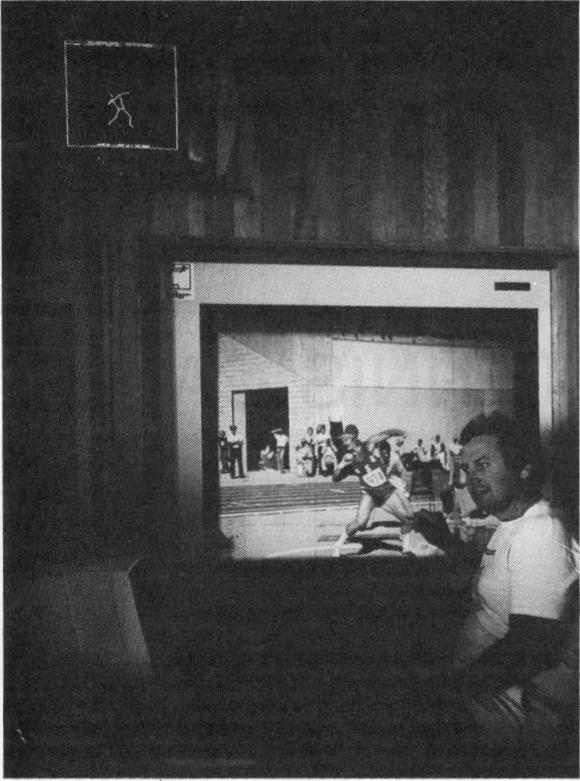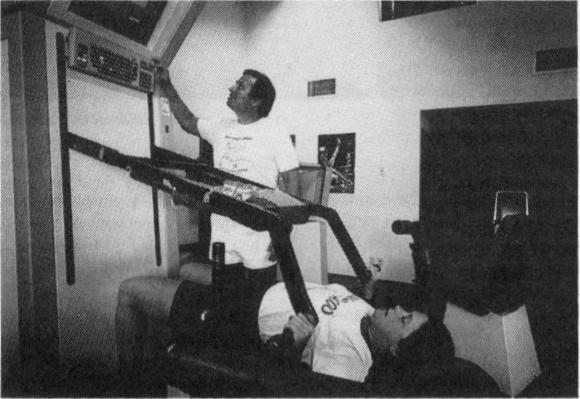| Previous | Index |
Above: Ariel traces an athlete's movement with a special magnetic pen. The information is then processed by a computer that feeds out a simulated threedimensional stick person on a graphics terminal.
Below: Ariel uses a computer to analyze an athlete's muscles in a stress situation.
David M. Stewart is a part-time free lance based near Detroit.
waves, things like that-and see who reacts to certain conditions in the most favorable ways to be a good volleyball player."
Such a search can have dramatic effects. Ariel illustrates a very visible change: "The average height of the women was five foot, six inches or five foot, seven; now it's six foot, two. You play volleyball by how high you can jump above the net, so you can't play with a bunch of fantastic midgets."
Ariel's library of floppy-disk "recordings" from his computer boasts some of the biggest names in sports. He can show you stick men who have Jack Nicklaus's golf drive, Jimmy Connors's tennis serve, Bill Rodgers's marathon stride, Muhammad Ali's boxing sting-and even a stick horse with the gait of 1979 Kentucky Derbywinner Spectacular Bid. He has worked with the Kansas City Chiefs in football and the Kansas City Royals in baseball and is using a newly developed technique called "formation analysis" with the Dallas Cowboys. He is currently chairman of the biomechanics committee for the 1984 U.S. Olympic team.
Yet Ariel's work is not limited to the athletes themselves. In fact, his bread and butter at the research center and with his company is sporting-equipment development. He has developed tennis and racketball rackets, golf clubs, inexpensive but high-quality athletic footwear, and even a running shoe with a microchip implanted in its sole.
One of his early projects was a computerized exercise machine, developed in 1971 for Wilson Sporting Goods. Athletes have used it for years to simulate the physical demands of their sports. But it only went on sale to the public in May. Ariel explains:
"They had to wait for the proper time, when the consumer could appreciate computers. They couldn't market it when people didn't know what they were talking about. Today every little kid - you give him an object in his hand and he's looking for the keyboard."
Even beyond the athletic arena, Ariel is finding important applications for his biomechanical computer analysis. He has worked on designs for safer automobile seats and automatic syringes, and he has done studies of eye movement and verifications of insurance claims in injury cases.
Still, Ariel finds his work with athletes most rewarding, as one would expect of a man who finishes a five-mile run, gives an interview, and then goes on to his evening weight-lifting session.
"Athletes are very intelligent people," Gideon Ariel says earnestly. "They will persist to become the best." V
AMERICAN WAY November 1982


| Previous | Index |